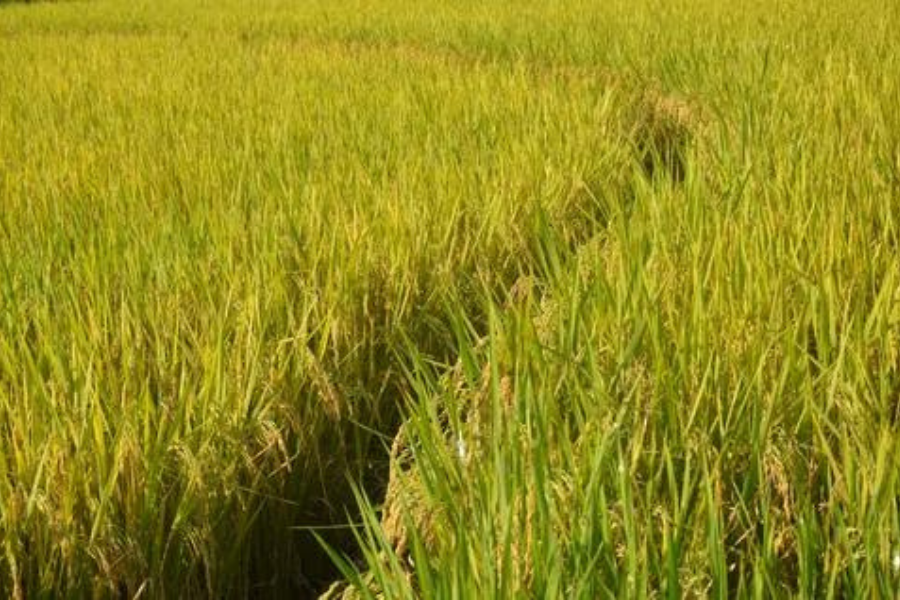Posted On: February 02, 2024
Posted By: KSNM DRIP

Rice is a staple food for more than 3 billion people worldwide, making it the most important crop. However, conventional rice farming methods pose a significant challenge due to reasons such as water scarcity and environmental impact. To move out of these issues, the System of Rice Intensification (SRI) has emerged as a revolutionary and sustainable rice cultivation process. By optimizing resource utilization, enhancing plant spacing, and promoting soil health, SRI offers an eco-conscious approach to growing rice. In this article, we will explore the core principles of SRI, its practices, and the environmental and social benefits it provides.
Rice ecosystem refers to the environment in which rice is cultivated. The ecosystem has an impact on the way your rice crop is grown. Here are some of the key aspects of a good rice ecosystem,
Rice is primarily grown in flooded fields, as it helps in controlling weeds and pests and provides a suitable environment for rice plants.
The type of rice that you grow has a different growth duration, size, and resistance to disease. With each region the ecosystem of a rice field changes.
Traditional rice cultivation involves flooding fields, but modern techniques like the System of Rice Intensification (SRI) promote controlled irrigation to optimize water usage.
The health of the soil directly impacts rice cultivation. Proper soil fertility, structure, and nutrient levels are essential for stronger rice plant growth.
Insects, pests, and diseases can affect rice crops. Integrated pest management (IPM) practices help minimize the use of pesticides and promote natural predators to control pest populations.
Farming practices, including planting, harvesting, and post-harvest processing, are integral parts of the rice ecosystem. Traditional methods and modern technologies influence the overall productivity of rice cultivation.
�The rice ecosystem also interacts with the surrounding environment, influencing local biodiversity. Birds, insects, and other organisms may thrive in and around rice fields.
Rice cultivation is highly influenced by climatic factors such as temperature, rainfall, and humidity. Different rice varieties are suited to specific climatic conditions.
Rice is a major cereal crop and staple food in eastern India, and most farmers depend solely on rice for their livelihood. Rice ecosystems in India can be grouped into the following categories
Irrigated Rice Ecosystem: This accounts for about 49.5% of the total area under rice crops in the country and is grown in bunded fields.
Rainfed Rice Ecosystem: This includes upland and lowland systems, where rice is cultivated under diverse soil and climatic conditions. The lowland system can be favorable, drought-prone, or submergence-prone.
Flood-Prone Rice Ecosystem: In some areas, rice is cultivated in flood-prone ecosystems.
The System of Rice Intensification (SRI) is an innovative and sustainable method of cultivating rice that aims to optimize the productivity of rice plants.�
Unlike traditional rice cultivation methods, SRI promotes the transplantation of young, single seedlings with wider spacing to allow for better root development and increased nutrient absorption. This technique also emphasizes intermittent flooding and drying of fields, which helps improve the root system and overall plant health.
SRI practices prioritize the use of organic inputs and discourage the reliance on excessive chemical fertilizers and pesticides. By adopting SRI, farmers can achieve higher yields with reduced water usage, making it an eco-friendly and economical approach to rice cultivation.
Unlike conventional methods that use multiple seedlings, SRI encourages the transplantation of single, young seedlings that are around 8 to 15 days old. This individual transplantation allows each plant to establish a better root system, enhancing its capacity to access nutrients and water. The use of young seedlings promotes better plant growth and ultimately leads to improved yields.
SRI recommends wider spacing between rice plants, typically at least 25 cm apart in a square pattern. This spacing makes it easier to have better sunlight penetration, air circulation, and nutrient distribution among plants. By reducing overcrowding and competition for resources, each plant can develop more effectively, maximizing the overall yield potential.
SRI has a strong value on soil health and nutrient management. Practices include the incorporation of organic matter into the soil, such as compost or green manure, to enhance soil structure and fertility. By reducing or not using chemical fertilizers, SRI promotes a balanced and healthy soil ecosystem. This approach improves nutrient uptake by rice plants and reduces environmental impact.
Unlike continuous flooding in conventional rice farming, SRI practices intermittent irrigation. This involves maintaining a moist rather than flooded soil and allowing for controlled water release. By improving the oxygenation of the root zone and reducing methane emissions from waterlogged soils, intermittent irrigation enhances overall water use efficiency and addresses water scarcity concerns.
The System of Rice Intensification (SRI) presents a range of advantages that contribute to sustainable and efficient rice cultivation. Here are some of the advantages you can get by adopting SRI practices:
SRI can lead to a significant increase in rice yields, typically ranging from 20% to 100% or more.
It involves a reduction in seed use by 80-90% and a decrease in the use of chemical fertilizers by 20-100%
SRI practices can result in water savings of up to 50%
SRI promotes less reliance on artificial fertilizers, pesticides, and herbicides, which leads to a more sustainable and environmentally friendly approach to rice cultivation.
It enhances soil fertility and protects crops against climate, pests, and diseases.
As the global demand for rice continues to grow, embracing innovative and sustainable methods like SRI becomes crucial. By prioritizing the health of both crops and the environment, SRI stands as a beacon for the future of rice cultivation, offering a pathway towards increased productivity, economic viability, and environmental approach.